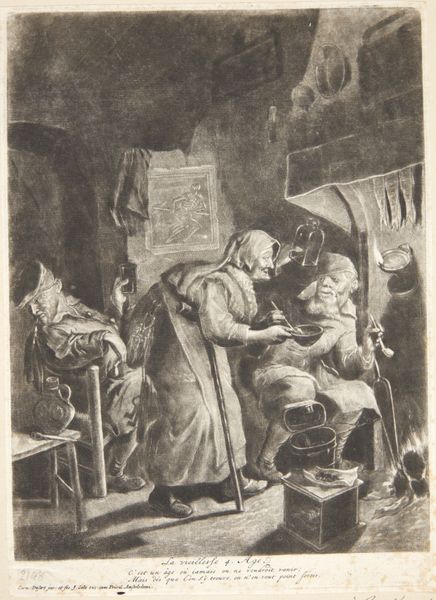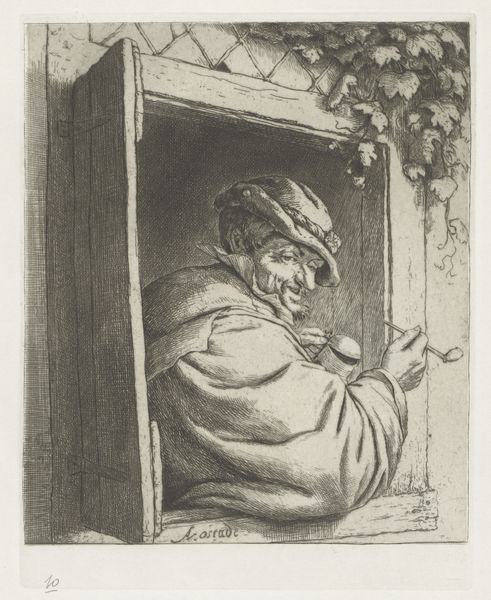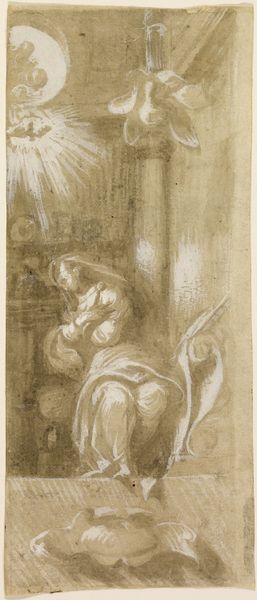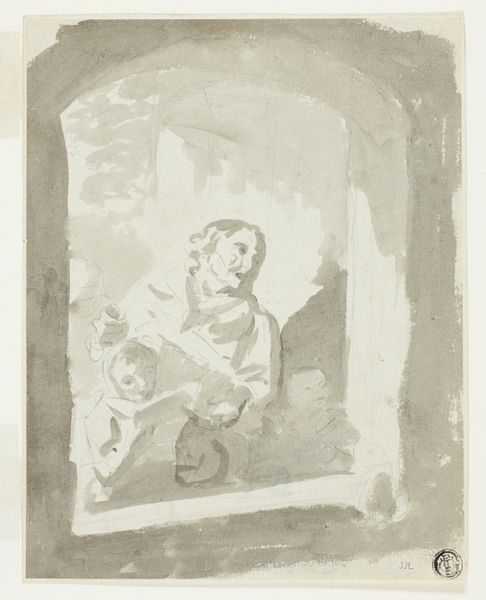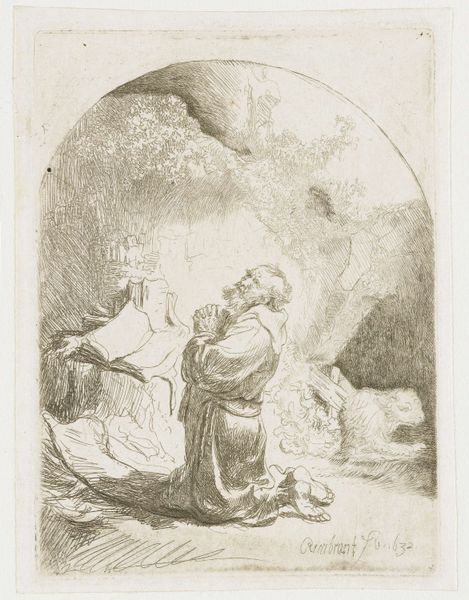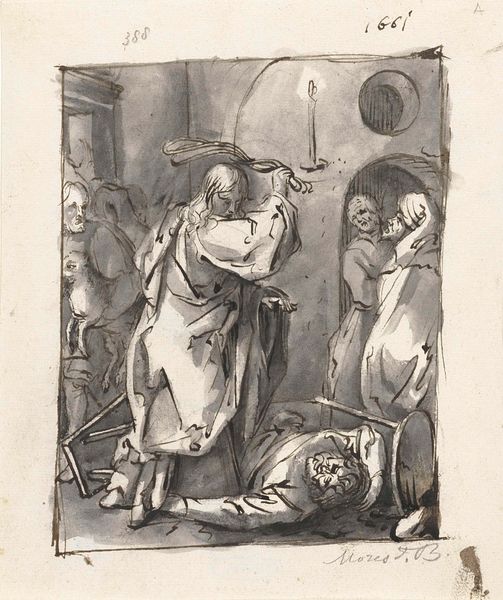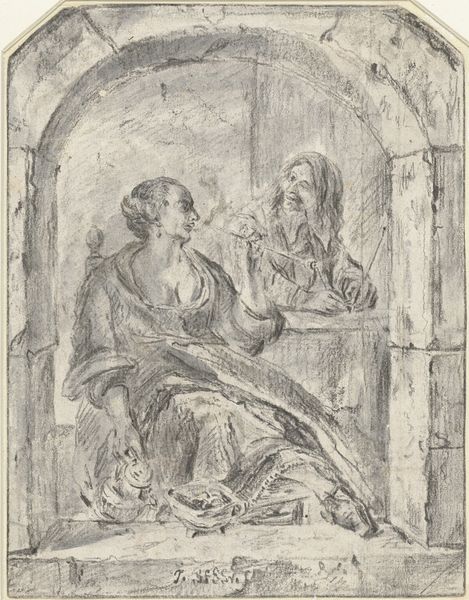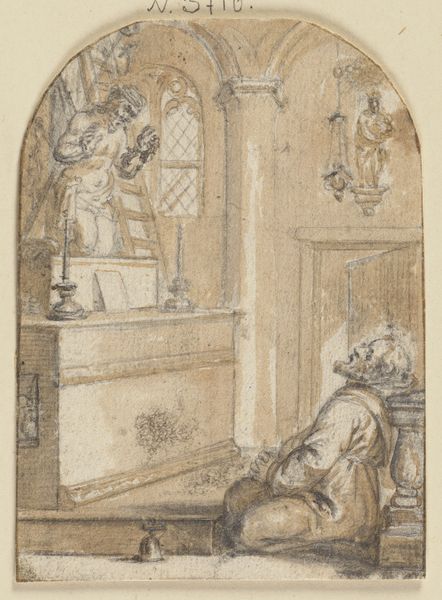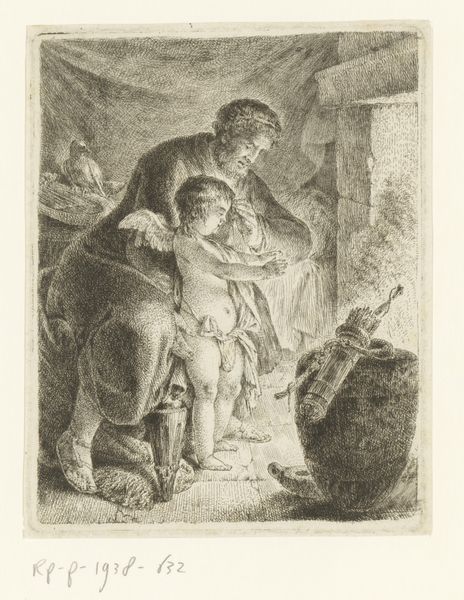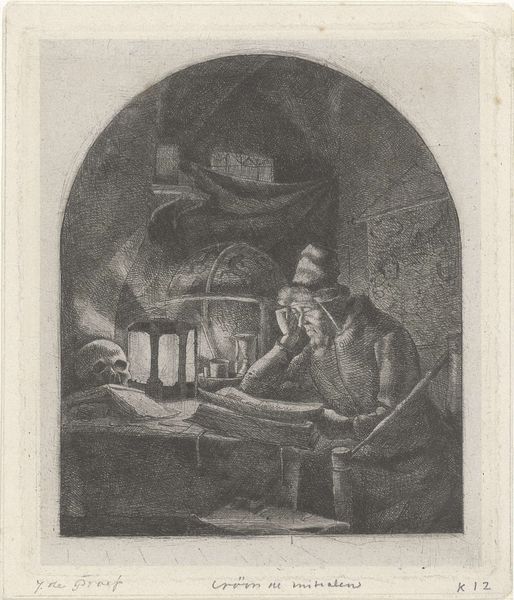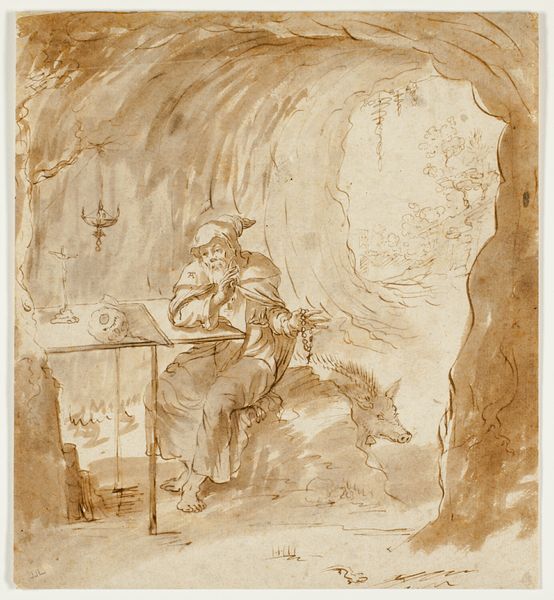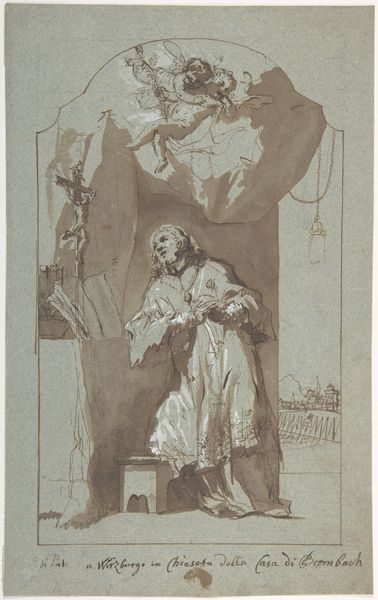
drawing, ink, pen
#
drawing
#
narrative-art
#
caricature
#
figuration
#
ink
#
coloured pencil
#
romanticism
#
pen
#
genre-painting
Dimensions: height 300 mm, width 240 mm
Copyright: Rijks Museum: Open Domain
Editor: This drawing, "Vrouw die een drinkende man bespiedt"—"Woman spying on a drinking man"— is by Pieter van Loon, dating from around 1811 to 1873. It's done with pen, ink, and colored pencil. The scene feels intimate, almost secretive. What do you see in this piece, in terms of the symbolism embedded in it? Curator: The candle is central. It pierces the darkness, illuminating not truth necessarily, but selective knowledge. The woman holds it aloft, presenting light where she chooses. The man, slumped in his wicker seat, indulges in the potent drink – another symbol, of course, of altered states, loosened inhibitions. The arched doorway behind him has the quality of a church entrance and gives his behaviour a symbolic quality. The picture invites a probing question about whose vision prevails. Is it hers as the illuminated one, or his, through inebriated freedom? Editor: That's fascinating. I hadn't thought about the woman controlling the light as controlling the narrative, so to speak. But why the act of "spying," what could it be suggesting? Curator: Spying indicates a clandestine power dynamic. Her gaze isn't innocent observation, it's imbued with judgment, with an element of…knowledge withheld from the man. The light itself casts long, ominous shadows. The cultural memory embedded in this imagery includes suspicion, perhaps control, or even a fear of transgression. What is this man doing to be "caught"? It's a battle of images, isn't it? Editor: Yes, absolutely. It is unsettling, this idea of images clashing, competing for power. The piece definitely leaves me with more questions than answers, especially regarding the intention of both actors in the visual drama. Curator: Indeed. The drawing’s emotional weight lies precisely in this tension and ambiguity, reflecting universal psychological themes. We see the continuation of these concerns echoed throughout history.
Comments
No comments
Be the first to comment and join the conversation on the ultimate creative platform.
